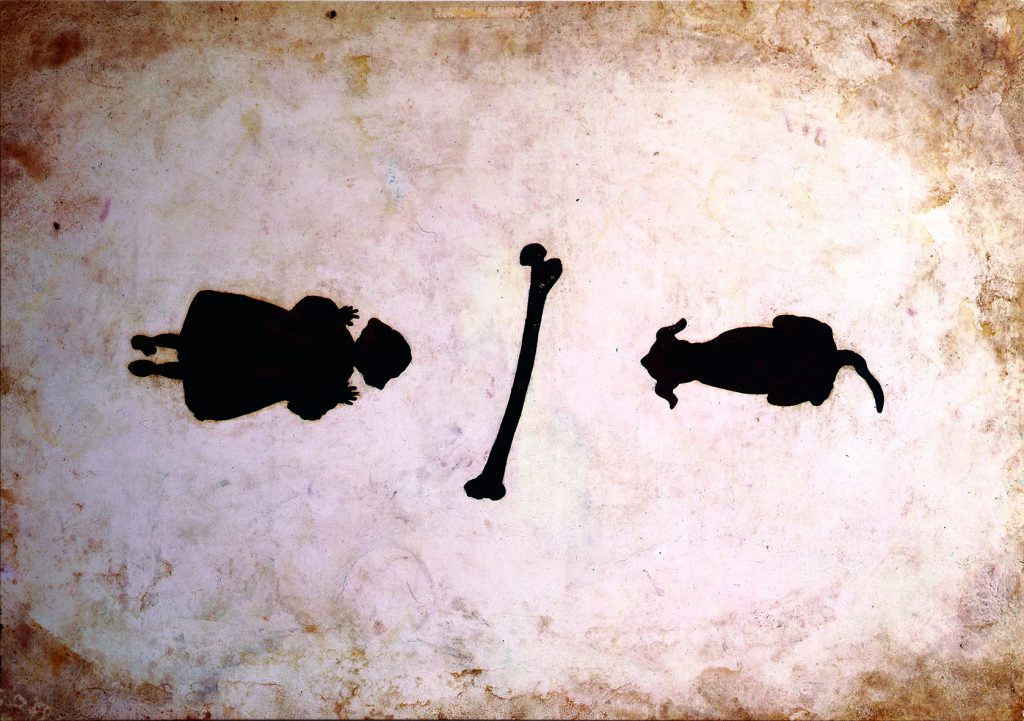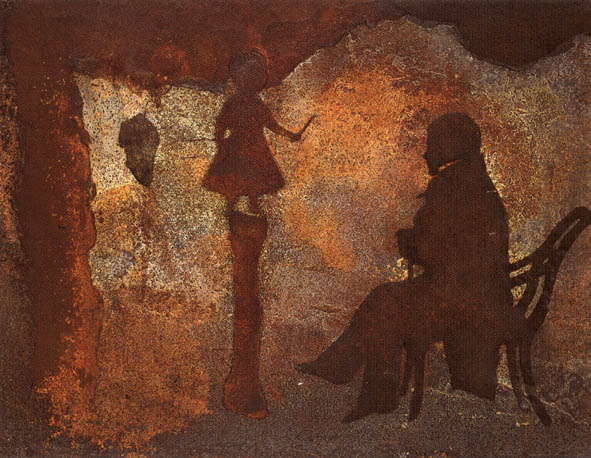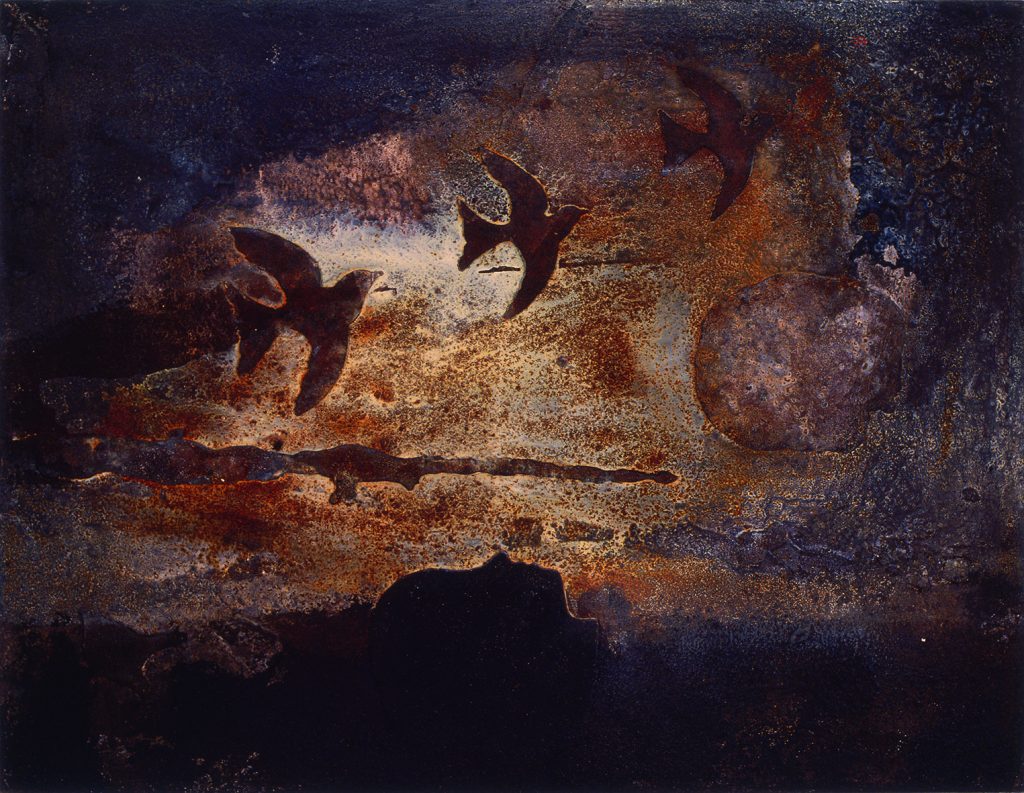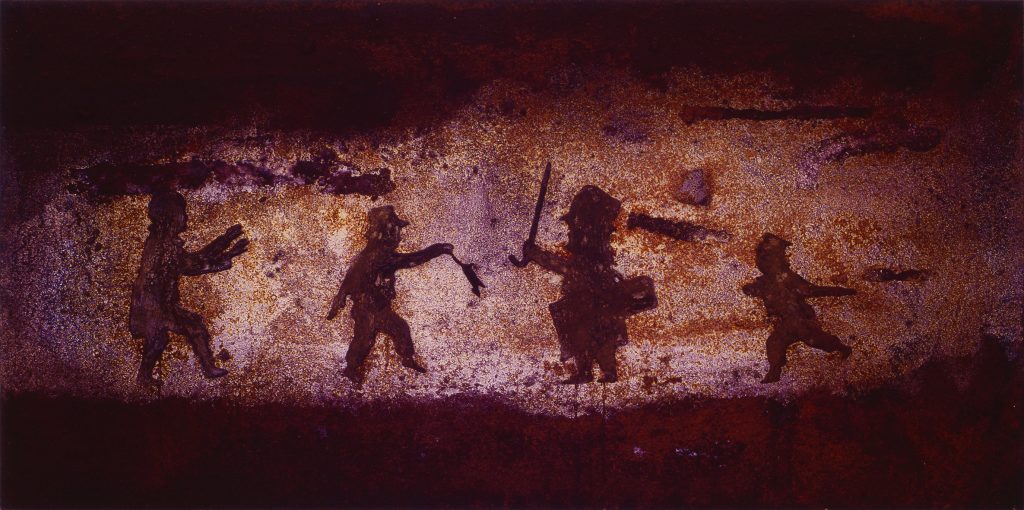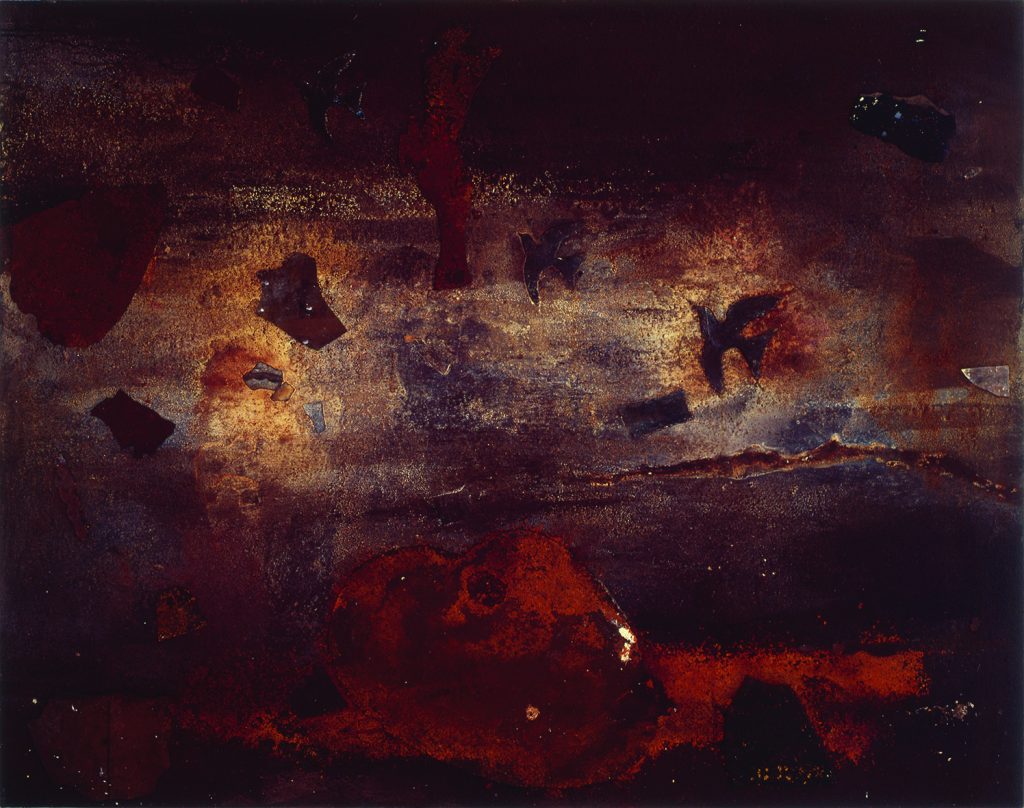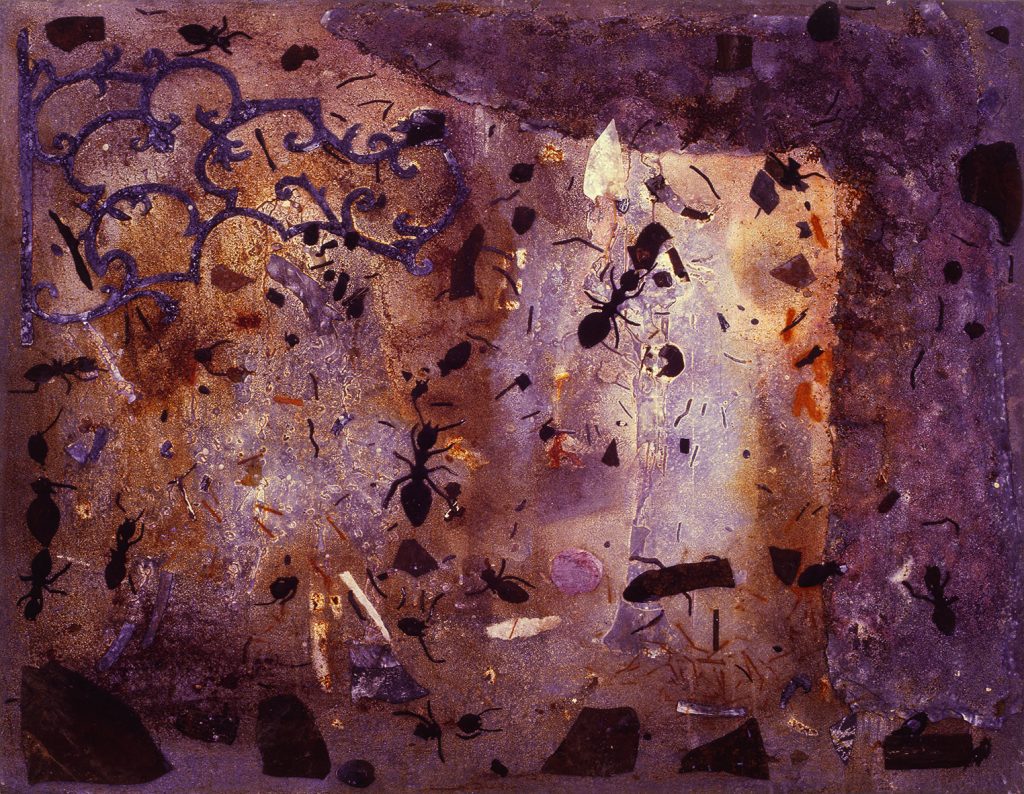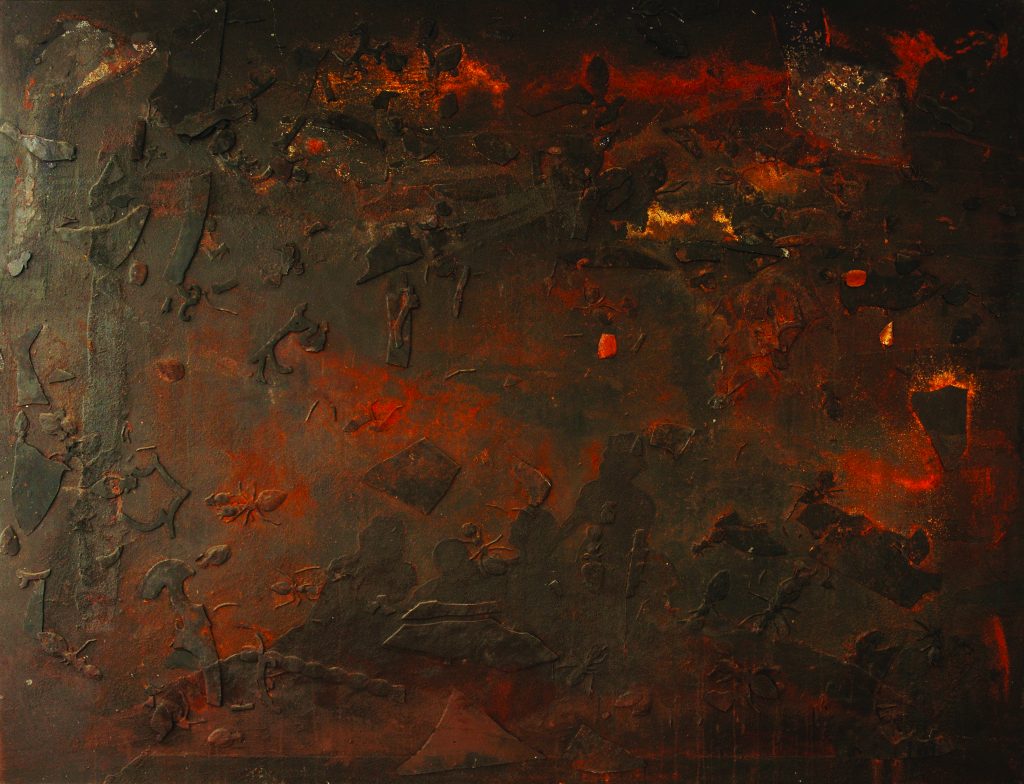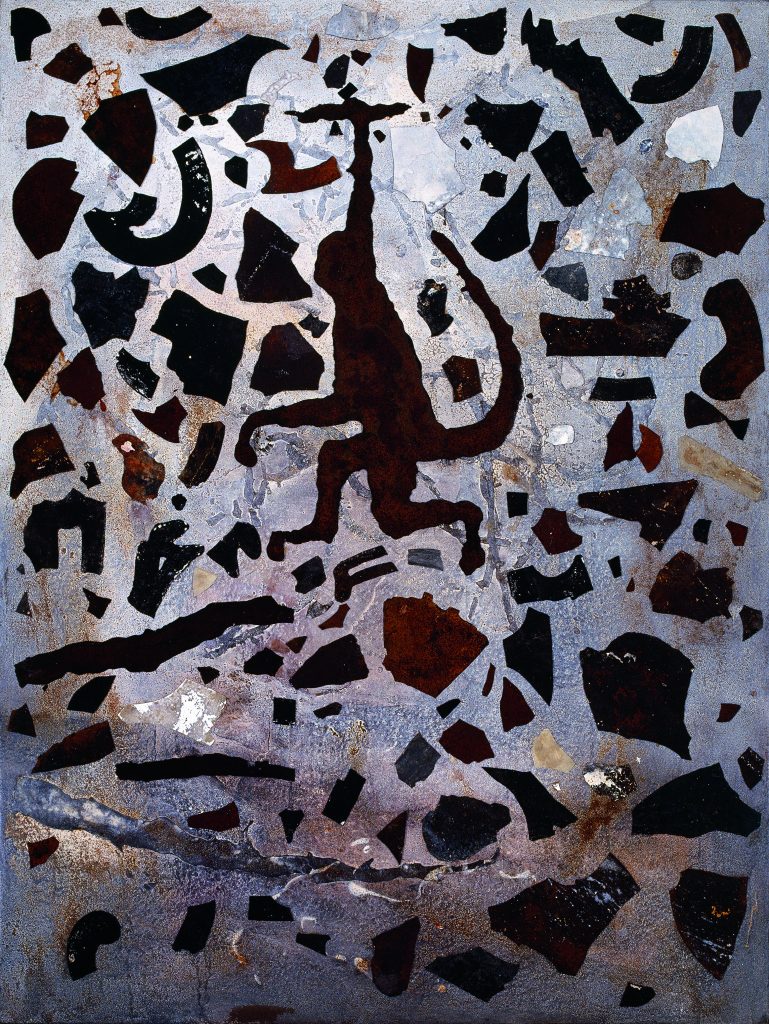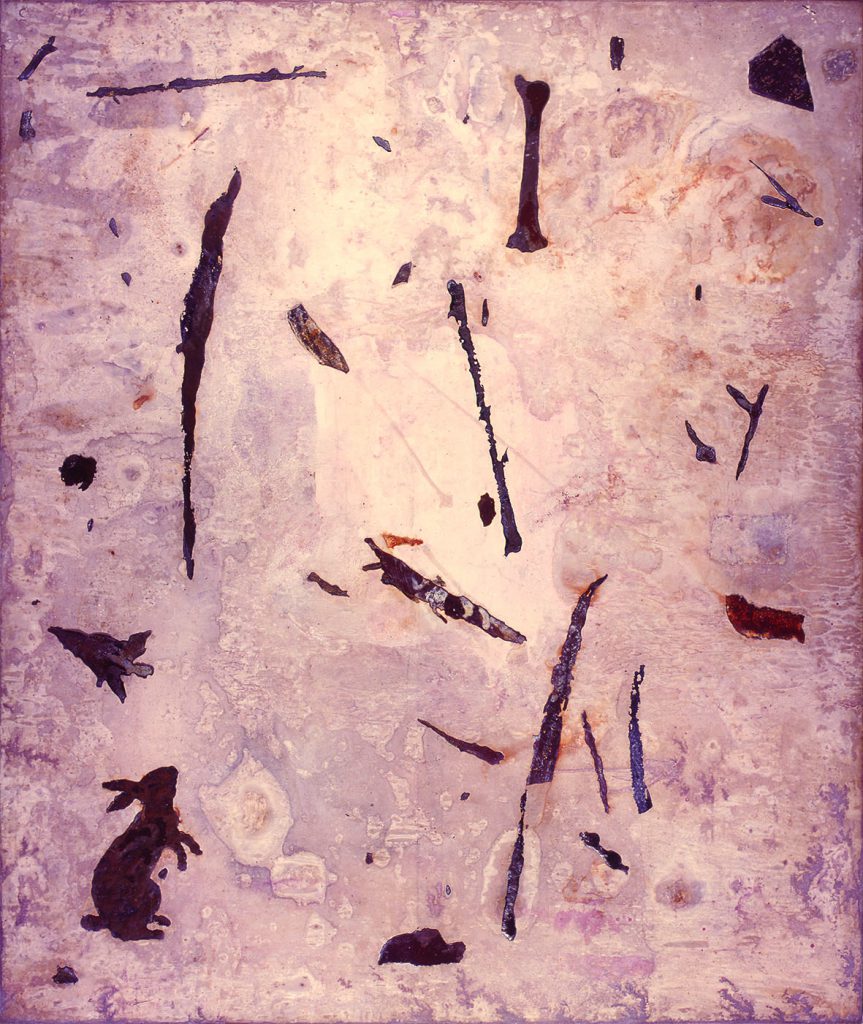Silhouettes
“The untitled work produced in 1996 measuring 2 x 1.5 meters features in its center a tangle of hard cut-outs and scattered metal chips, the silhouette of a monkey with its arm raised. The field of the painting is divided into filled and empty portions, between the pale gray rough surface of the fabric canvas and the hard, dark surfaces of the rust colored flat shards, between parts patched by stains and parts with reworked material. The silhouette of the monkey is subject to the same type of treatment as the metal scraps, so that for a moment we wonder whether its identification depends more on the efforts of our imagination than on the accuracy of the cut-out. Even if this is not the case, as we recognize the level of adherence of the shape to a more evident meaning, the fact is that this situation creates a predisposition for us to move outwards, trespassing on other fragments of possible meanings. Similar to most of the other canvases produced by this artist, this canvas becomes a palimpset: within the canvas there is another and so on, in an endless chain.
The work which follows the method of the previous painting, ‘Great Hall (Grand Salon)’ is one of the best examples by this artist of a canvas that is understood with a plethora of meanings. Although the dark, rusty shade covers the entire square of the canvas, resulting in a tonal flattening, a darker region is demarcated in the upper right towards the side, like the entrance to a set. This architectural situation is subtly underlined through the perception of a lighter vertical element – a column? – set slightly further back from the entrance to the environment. In contrast to this situation, we distinguish the silhouettes of some ants, moving across the flat ground of the canvas, alongside a few plated metal fragments, including a chunk of ornamental grillwork. Thus, in the midst of these materials, a vortex built from spent, corroded matter, the suggestion springs forth of an empty setting, simultaneously with that of another environment viewed from an expanded detail, of a floor infested with gigantic ants.”
(excerpt from “The Piano Factory”, by Agnaldo Faria, published in Daniel Senise. The Piano Factory, Andrea Jakobsson Estúdio, Rio de Janeiro, 2002)
https://www.danielsenise.com/texto/the-piano-factory-4/
